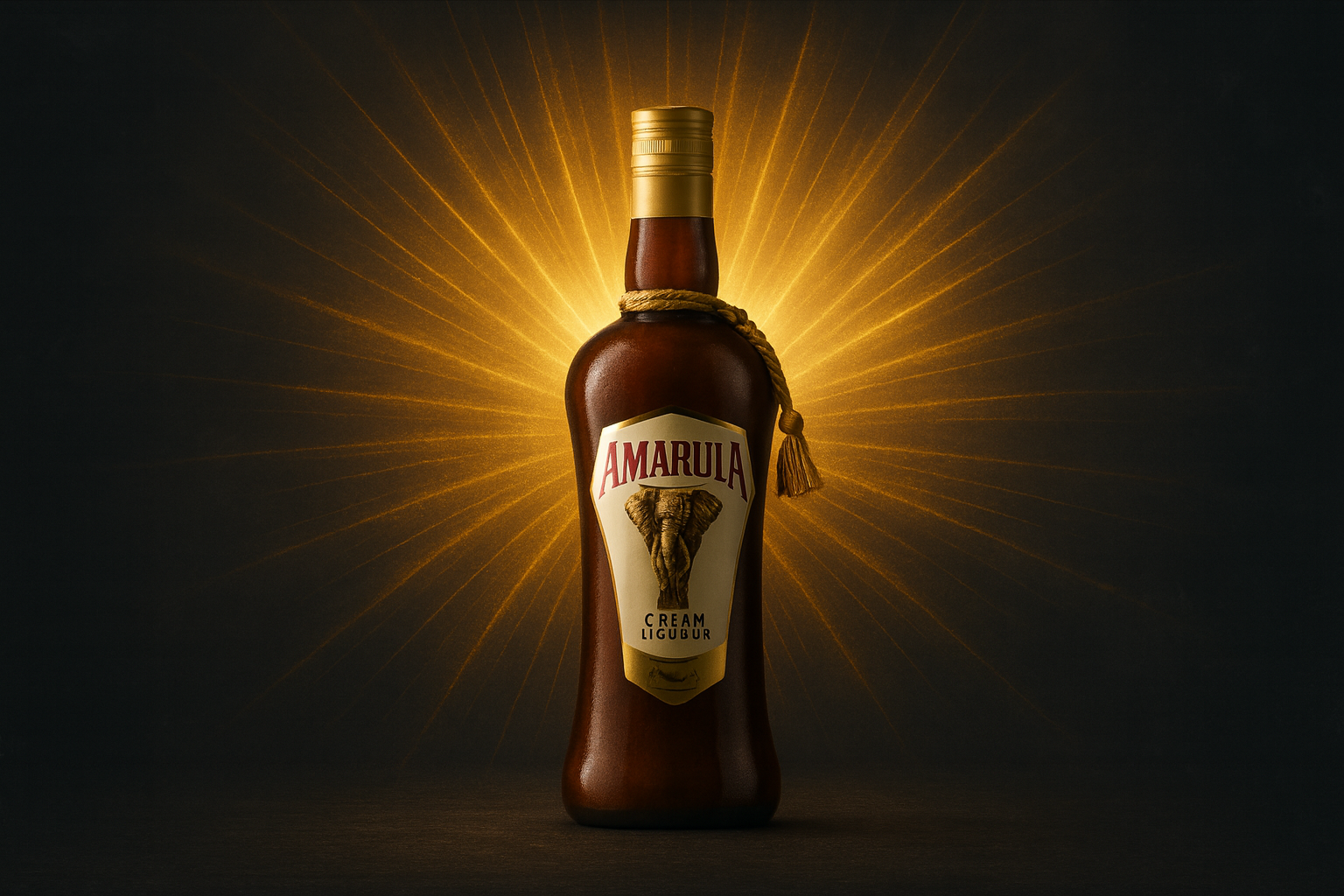We sometimes get asked: if a global brand owns a famous trade mark, does that mean I can’t use the same name at all in South Africa?
The short answer is “not necessarily,” but the law is complex and evolving.
To illustrate, we recently advised a fintech company that wanted to register the brand VOOM SAFE PAYMENTS. (for confidentiality “VOOM” is used here as an illustrative example.) The challenge? “VOOM” is also used by a global sportswear company with a massive online presence. Our client wasn’t selling clothes – they were building a payments platform. Could the sportswear giant still block them?
This case study explains how South African trade mark law deals with conflicts between well‑known marks and newcomers in different sectors. In most cases we advise clients to rebrand – it is safer than risking a costly, forced rebrand later. But where a client is committed to a name, a thoughtful filing strategy can improve the chances of securing protection and reduce the risk of conflict.
The framework: what the Trade Marks Act says
South Africa’s Trade Marks Act 194 of 1993 sets out two key sets of rules.
Section 10 lists marks that cannot be registered (or can later be cancelled). Relevant grounds include:
- s 10(6): marks identical or confusingly similar to a well-known mark (even if not registered).
- s 10(12): marks that are inherently deceptive, confusing, contrary to law or contra bonos mores.
- s 10(14) & (16): marks identical or confusingly similar to earlier marks for the same or similar goods/services.
- s 10(17): marks identical or similar to a well-known registered trade mark, where use would take unfair advantage of or harm its reputation – even without confusion. This is an anti‑dilution provision applicable at the registration stage.
Section 34 deals with infringement once a mark is registered:
-
s 34(1)(a): identical marks on identical goods.
-
s 34(1)(b): similar marks on similar goods, where confusion is likely.
-
s 34(1)(c): dilution – use of a mark identical or similar to a well‑known registered trade mark that is likely to take unfair advantage of, or be detrimental to, its distinctive character or reputation, notwithstanding the absence of confusion.
Section 35 protects unregistered well-known marks, codifying South Africa’s obligations under the Paris Convention; reputation alone can block a newcomer.
Well-known marks: reputation without trading
Even if there’s no local business, global fame can create rights. Courts recognise global reputation where South Africans are exposed to a brand through media or travel.
- In McDonald’s v Joburgers Drive‑Inn (1997), the Appeal Court blocked a local restaurant from using the “McDonald’s” name even though the fast‑food giant had no outlets in South Africa at the time (partly due to apartheid-era sanctions). Its international fame was so strong that South African consumers were likely to associate the name with the global chain.
-
In Victoria’s Secret v Edgars (2004 (2) SA 608 (T)), the lingerie brand was found well known in South Africa purely through international exposure, even before any local store opened.
Section 35 codifies this principle: reputation alone can block a newcomer.
Confusion: the starting point
The first question in any trade mark dispute is: will consumers be confused?
-
Plascon-Evans v Van Riebeeck Paints (1984 (3) SA 623 (A)) held that the test is whether the ordinary consumer, with imperfect recollection, would be confused. Marks are assessed as a whole, not dissected syllable by syllable, for phonetic (sound), visual (appearance) and conceptual (meaning) similarity – and a finding on any one of these can lead to confusion and deception.
-
Cowbell v ICS Holdings (2001 (3) SA 941 (SCA)) added that descriptive elements (like “SAFE PAYMENTS”) count for little; what matters is the distinctive element (here, “VOOM”).
-
Zonquasdrif v Stellenbosch Farmers’ Winery (2003 (6) SA 124 (SCA)) showed that even identical marks can sometimes coexist for seemingly similar goods. The court listed factors relevant to confusion, including similarity of the marks, similarity of goods/services, the likely consumer base, trade channels, and surrounding circumstances. On those facts, wine and grapes for making wine grapes could share the same name because they travelled in different trade channels and targeted different buyers.
Applying these principles, “SAFE PAYMENTS” is generic; the real issue for our client was whether “VOOM” alone would make consumers think of the sportswear brand. On confusion alone, fintech and sportswear are far apart – different goods, different consumers and different channels.
Overlapping brands: when coexistence works
Not all identical words clash. Famous overlaps show coexistence is possible where markets are distinct:
-
PUMA – sportswear vs petroleum.
-
DOVE – soap vs chocolate.
-
LOTUS – cars vs software.
These coexist because the goods, consumers, and trade channels are distinct and there is no reasonable likelihood of confusion .
Dilution: protection beyond confusion
But confusion is no longer the only game in town for registered marks: once a mark is registered and well‑known, the owner can invoke the anti‑dilution provisions
Because the global sportswear company had registered its VOOM mark in South Africa, it could rely not only on well-known mark protection under s 10(6) and s 35 (which still hinge on confusion), but also on the broader dilution provisions in s 34(1)(c) and s 10(17). These provisions extend protection even absent confusion, if the junior mark weakens the senior mark’s distinctiveness or unfairly capitalises on its advertising goodwill.
Recent cases confirm that South African courts are increasingly willing to uphold such claims without confusion, making trade mark registration a more powerful shield.
So in addition to confusion (marks in the same and related classes) VOOM also faced the risk of dilution – protection against weakening or exploiting a famous brand’s identity, even in unrelated markets.
In Commercial Autoglass v BMW (2007 (6) SA 637 (SCA)), the court described s 34(1)(c) as a “radical departure” because it allows claims without confusion.
On the one hand it would protect a brand from dilution of brand good will. Textbooks often used the “ROLLS-ROYCE bubblegum” example: if ROLLS-ROYCE were applied to bubblegum, the mark’s aura of luxury might be trivialised which could potentially be damaging to the brand’s ‘sheen’ and ultimately its value down the line.
But section 34(1)(c) also considered unfairness – the “anti-free ride” doctrine: even if consumers are not confused, the law may step in if a junior user trades on the aura of a famous brand. Which was slightly different because it suggested that there was no harm required.
But for years after, courts were reluctant to apply these provisions.
-
In Laugh It Off v SAB 2006 (1) SA 144 (CC), SAB tried to stop parody T-shirts mimicking CARLING BLACK LABEL. The Constitutional Court held that parody alone is not dilution – the brand had to show at least a likelihood real economic harm.
-
In Adidas v Pepkor 2013 (3) SA 59 (SCA), Adidas failed to stop two-stripe shoes. The SCA held that similarity is not enough – dilution only occurs when the ability of the famous mark to function as a unique identifier is actually weakened.
-
In Verimark v BMW 2007 (6) SA 263 (SCA), BMW could not prevent its cars appearing in a polish advert. The court stressed that mere reference, without trade mark use, is not dilution.
The thread in earlier cases was caution: unless there was evidence of likely economic harm, courts hesitated to apply dilution. But where harm was apparent, the goods or services were related enough to trigger confusion-based provisions anyway. In practice, that made s 34(1)(c) of little use to brand owners.
Textbooks often pointed to “ROLLS-ROYCE bubblegum” as a hypothetical – the fear was that luxury brands could be trivialised if their aura was stretched too far. But more recent cases (Cape Cookies, Dulux) show that courts are now prepared to intervene on the basis of unfair advantage alone, even without hard evidence of harm.
A new wave: unfair advantage without harm
However, more recent cases show a shift – suggesting that courts may be willing to intervene on the basis of unfair advantage alone, even without hard evidence of harm.
-
National Brands v Cape Cookies (2023 SCA) – The owner of SALTICRAX opposed SNACKCRAX. The Supreme Court held that s 10(17) is not limited to dissimilar goods; it applies even to similar or identical goods. Crucially, the court ruled that actual harm is not required – a likelihood of unfair advantage or detriment, backed by reputation evidence, is enough. Cape Cookies was effectively “riding on the coat-tails” of SALTICRAX, and that alone justified refusal.
-
Akzo Nobel v Dumax Paints (2023 Free State High Court) – DULUX prevailed against DUMAX. Even though confusion was “borderline”, the court granted relief under s 34(1)(c), finding Dumax had deliberately tried to “sponge” off Dulux’s reputation. The unfair free ride itself was sufficient to ground liability.
-
Southern Liqueur Co. v Noble Spirits (Amarula v Afrula) (Western Cape High Court 2024) – AMARULA stopped AFRULA from launching a cream liqueur. The court emphasised that s 34(1)(c) protects the reputation and advertising value of the mark. The court held that AMARULA’s mark was well‑known and that AFRULA would likely take unfair advantage of AMARULA’s selling power and advertising value, and could dilute its uniqueness by associating the premium brand with cheaper alternatives.
The lesson: South African courts are now more willing to use dilution to protect famous marks, especially where intent to exploit can be inferred. What once required near-proof of serious economic harm now often turns on whether the junior mark appears to free-ride or weaken the senior mark’s unique identity.
Then vs Now: Dilution in South Africa
| Earlier approach (Laugh It Off, Adidas, Verimark) | Recent approach (Cape Cookies, Dulux) |
|---|---|
| Courts required proof (or at least a reasonable apprehension) of serious economic harm. | Courts accept that unfair advantage or free-riding may suffice, even without harm. |
| Dilution seen as largely theoretical; confusion‑based provisions did most of the work. | Dilution now actively applied, even where confusion is weak or absent. |
Why this mattered for VOOM
For our fintech client, the risks were real:
-
Examiners could have refused VOOM under s 10(14 & 16) (confusion with earlier marks), or s 10(17) (unfair advantage/detriment).
-
The sportswear brand could ultimately still apply to have the registered mark removed or cancelled, and, after removal, sue under s 34(1)(c) for dilution.
-
Even if confusion was unlikely (different goods), a dilution claim could succeed if VOOM appeared to trade on the sportswear brand’s goodwill.
Filing VOOM without a strategy was asking for trouble.
Our prosecution strategy
The truth is, the safest course is always to choose a distinctive mark that is unique. That avoids conflict altogether and keeps you out of fights with global brands who have deep pockets and long litigation horizons. We almost always recommend a rebrand in such high-risk situations. But not every client takes that advice. Sometimes they are committed to a name for commercial, cultural, or investor reasons — and in those cases, our role is to design the most optimal strategy in the circumstances.
We knew that filing VOOM without a strategy would almost certainly draw opposition. So instead of a single “all-in” filing, we designed a layered approach layered approach to reduce risk , manage conflict and preserve leverage:
- Composite filings – We filed VOOM SAFE PAYMENTS logos in most classes: especially higher-risk classes, where the sportswear brand was active or might expand. By anchoring the application in the full phrase and logo, we reduced the chance of it being seen as a direct clash with the plain word VOOM. At the same time, we reserved plain VOOM SAFE PAYMENTS word marks or even VOOM word marks for safer, fintech-specific classes where the risk of conflict was lower.
- Colour and stylisation – We deliberately filed a distinctive identity, claiming rights in specific colours and stylisation. This not only avoided overlap with the sportswear company’s well-known palette, but also meant that in any side-by-side comparison our client’s marks had to be assessed in its full design, not just as bare words.
- Market carve-outs – Narrow specifications (e.g. restricting VOOM to “financial software” instead of “software” broadly) can sometimes reduce the overlap enough to avoid opposition.
- Stepwise filings – We staggered the rollout: starting with Class 36 (financial services), the client’s core area, before extending to adjacent classes (38 for communications, 42 for software, 9 for apps/devices, and eventually 35 for general services). This gave us a defensive foothold early on, while keeping higher-risk classes flexible depending on how opposition unfolded.
- Future-proofing – Anticipating brand extensions, and the possibility of future conflict we secured applications for likely sub-brands like VOOMPay and VOOMEFT and potential alternative similar misspellings like VROOM and VLUUM. These “shadow filings” meant the client wouldn’t be boxed in later.
- Timing of acceptances – Manage the publication of applications to ensure the most defensible marks are registered before higher‑risk marks are advertised. We ensured that the most defensible marks (composite logos in fintech classes) were registered and entrenched before higher-risk marks were exposed to potential opposition. This staged approach meant that if conflict came, our client already had enforceable rights on the register – rights that could not simply be opposed but would first have to be cancelled, a slower and more expensive process for any challenger.
Together, these tactics created a defensible position, securing core rights to build investor confidence and consumer recognition, while giving us leverage if the sportswear giant ever raised objections.
The outcome
Our client secured registrations in its critical classes. Higher-risk filings were structured defensively, leaving scope to negotiate if challenged. Most importantly, while there was still risk the client could move forward with investor discussions and rollout with confidence that its brand was protected.
Our client secured registrations in its most critical classes. Higher-risk filings were structured defensively, leaving scope to negotiate if challenged. The strategy did not eliminate the possibility of conflict, but it gave the client a defensible foothold: core rights on the register, a distinctive brand identity, and leverage if objections were raised. It was able to move forward with investor discussions and rollout with reasonable confidence that its rights were secure enough to build on.
Other coexistence strategies
Filing strategy is not the only tool. In some cases:
-
Consent agreements – It may be worth approaching the senior brand for written consent. While brand owners often refuse, and it risks springing them into action, asking early is often safer than waiting until they notice you later (when litigation becomes more expensive and aggressive).
-
Honest Concurrent Use – If a brand has been used openly, substantially, and honestly for many years (typically 5–10+), courts can force coexistence, granting parallel rights even against an earlier registration. This is hard-won, evidentially heavy and requires proof that you came up with the name independently of the famous brand – but it can preserve rights where both marks have established an independent reputation and goodwill.
-
Market carve-outs – Sometimes, limiting specifications (e.g. restricting VOOM to “financial software” instead of “software” broadly) can reduce the overlap enough to avoid opposition.
Lessons for businesses
-
Fame travels – global marks can be enforced here even without local trade (McDonald’s, Victoria’s Secret). This is the single biggest trap for local businesses who assume “they don’t trade here, so it’s fine.”
-
Dilution has teeth – Commercial Autoglass, Cape Cookies and Dulux show that famous brands can win even without confusion. The “free ride” argument is increasingly enough to ground liability.
-
Confusion is nuanced – Plascon-Evans, Cowbell, Herbex and Zonquasdrif highlight that confusion is tested impressionistically, with factors like distinctiveness, trade channels, and consumer perception playing key roles.
-
Overlap is possible – PUMA, DOVE and LOTUS show coexistence can work if markets are genuinely distinct. But the more famous the senior mark, or if the junior use carries negative or trivialising associations (e.g. adult/porn services, or cheap goods like bubblegum against a luxury brand), the less room there is for peaceful overlap.
-
Registration isn’t immunity – registration gives you strong defensive rights while it stands, but it’s not bulletproof: marks can be opposed before registration or, while more difficult, even cancelled afterwards if it can be shown that the registration should not have ben made or should no longer remain.
-
Strategy is key – layered filings, stylisation, phased rollouts and even alternative, more distinctive names can turn a risky brand into a defensible one.
-
Big brands fight hard – global companies have budgets and incentive to litigate. Even a weak case can be costly to defend. Often the commercial reality is that a rebrand is cheaper than a fight.
Closing thought
South African law gives famous brands extended protection, but not monopolies over language. The boundary between fair coexistence and infringement is narrow. For most businesses, the safest choice is still a distinctive, unique brand that avoids the fight altogether. But where commercial realities mean a high-risk name must be pursued, success lies in foresight: anticipating objections, managing confusion and dilution risks, and structuring filings to make the brand defensible.
The VOOM example is illustrative, but the lesson is universal – trade mark prosecution is not a formality or tick-box exercise; it requires foresight, strategy, and an honest appraisal of risk.







